Threatened, Endangered, and Protected Species
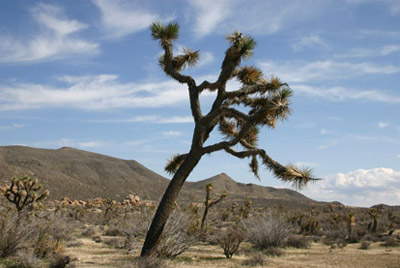
Joshua Tree (Yucca brevifolia)
The Joshua tree has become an important symbol of the Mojave Desert. Named after the biblical figure Joshua by Mormon Pioneers, Joshua Trees grow best at elevations between 2,000 and 6,000 feet, prefer flat or gently sloping terrain, and are usually supplanted on steep hills within their range by black brush and other scrubs. The largest specimens can be massive, over 32 feet in height with a trunk circumference of 12 feet. They do not have growth rings like true trees, so determining their age can be difficult, one Joshua tree in the Joshua Tree National Park has been estimated to be about 900 years old. Visit our Joshua Tree page for more information.
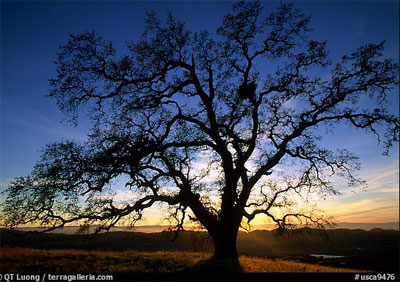
California Oak
There is a variation of California’s Oak trees found throughout the state. The main species of oak in southern California include blue oak, interior live oak, valley oak, canyon oak, coast live oak, California shrub oak, and Engelmann oak. They are found to be the dominant species in many San Bernardino chaparral. Visit our California Oak page for more information.
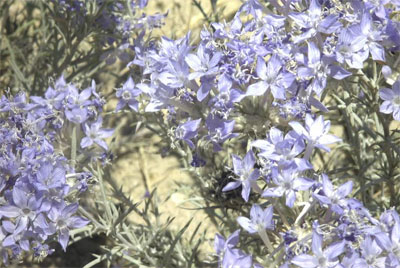
Santa Ana River Woolly Star (Eriastrum densifolium sanctorum)
Biologists call it the Eriastrum densifolium sanctorum. The Santa Ana River woolly star is a wild flowering plant. It belongs to the Riversidian Alluvial Fan Sage Scrub community that dominates the Santa Ana River flood plain. With stems growing 10 to 30 inches tall from a woody base, the plant has a white woolly color with irregularly divided leaves. Visit our Santa Ana River Woolly Star page for more information.
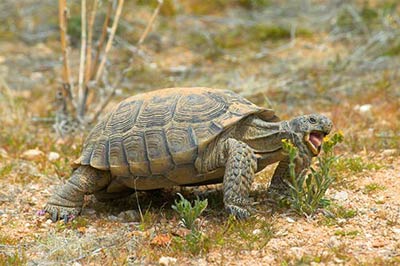
Desert Tortoise (Gopherus agassizii)
The desert tortoise is designated California’s State reptile and is found in the Mojave and Sonoran Deserts of Southern California. They inhabit semi-arid grasslands, gravelly desert washes and sandy canyon bottoms below 3,500 ft. The desert tortoise has a domed, brown shell (carapace) 9-15 inches long and 4-8 inches high, and muscular, flattened front legs with long claws adapted for digging deep burrows underground. The tortoise can weigh between 8 and 15 lbs., and live to be 80-100 years old. Tortoises eat herbs, grasses new growth of cactus and annual flowers. Visit our Desert Tortoise page for more information.

Mountain Yellow-Legged Frog (Rana muscosa)
The mountain yellow-legged frog is approximately 1.5-3.5 inches in size. The dorsum is highly variable with olive, yellowish or brown color, with variation of black or brown lichen-like markings. Undersurfaces of the legs and lower belly are yellow to pale orange. They have been known to smell like garlic when handled. Visit our Mountain Yellow-Legged Frog page for more information.
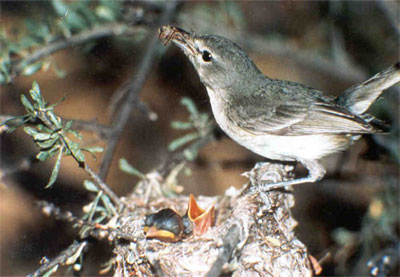
Least Bell’s Vireo (Vireo bellii pusillus)
The least Bell’s vireo (LBVI) is a migratory songbird, dependent upon the riparian habitat for breeding. Least Bell’s vireo is 4 ¾ -5 inches in size, and is smaller than a sparrow. Its coloring is dull olive-gray above, whitish below, a faint white eye ring and fainter wing bars. The nesting is 3-5 white eggs, sparsely marked with brown in a well made pendant cup of plant down and bark stripes, placed in a dense tree or shrub. Visit our Least Bell’s Vireo page for more information.
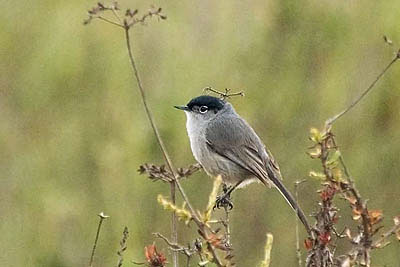
Coastal California Gnatcatcher (Polioptila californica californicus)
This small, inconspicuous coastal California gnatcatcher flies over the coastal sage scrub plant community in search of food. A predominantly bluish gray bird, its darker back and mostly black tail contrast with its lighter-colored belly. Visit our Coastal California Gnatcatcher page for more information.

Burrowing Owl (Speotyto cunicularia)
The Western burrowing owl, a California Species of Special Concern, is declining across much of the state. Lost of habitat to urban development, ground squirrel control efforts, and intensive agriculture practices are the primary reason for the decrease in numbers of this bird. The burrowing owl is a robin-sized terrestrial owl, short-tailed and long legged. It is approximately 9 inches in size. It has yellow eyes; no ears turfs; face is framed in white, with blackish collar. It voice is liquid cackling; also a mellow coo-coooo, repeated twice. Visit our Burrowing Owl page for more information.
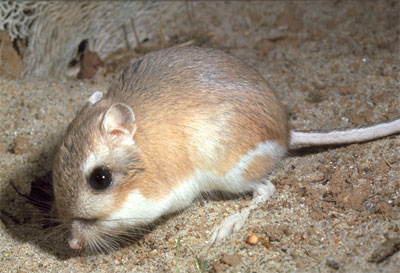
San Bernardino Kangaroo Rat (Merriami parvus)
The San Bernardino kangaroo rat (SBKR) has faintly yellowish tinted fur with an over-wash of dusky brown above and white underparts. It has a long tail with a white side stripe wider than the dark stripes and a dusky tufted tip. It has a dark line on either side of the nose. It is the smallest kangaroo rat in the U.S. at approximately 9 inches in length tail included. It has long hind legs and four toes on each foot. Visit our San Bernardino Kangaroo Rat page for more information.
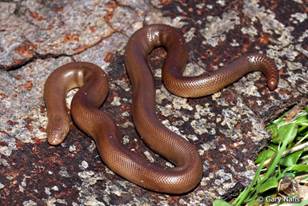
Southern Rubber Boa (Charina bottae umbractica)
The rubber boa is smooth and shiny. Uniformly olive-green, reddish-brown, or tan to chocolate-brown. The scales are smooth, in 32-53 rows. Large scales are on top of its head. Adult grow to over thirty inches. The average is from 14-33 inches long. The short broad head and tail give it a two-headed look and the eyes small, so one must look twice to see which end is which. Visit our Southern Rubber Boa page for more information.
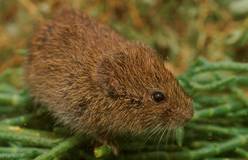
Mojave River Vole (Microtus californicus mohavensis)
The Mojave River Vole, also referred to as the Mojave River meadow mouse, is a federal listed Species of Concern, as well as listed by the state as a Species of Special Concern. The primary threats to the Mojave River voles are the destruction and fragmentation of habitat resulting from agriculture and urbanization. Visit our Mojave River Vole page for more information.

Mohave Ground Squirrel (Spermophilus mohavensis)
About 9 inches from nose to tip of tail, the Mohave ground squirrel is found only in the western Mojave Desert. Their sophisticated desert survival skills allow them to avoid the extremes of the hostile climate. Hard to find and even more difficult to observe and study, these rare and elusive little rodents have baffled biologists over the years. Visit our Mohave Ground Squirrel page for more information.